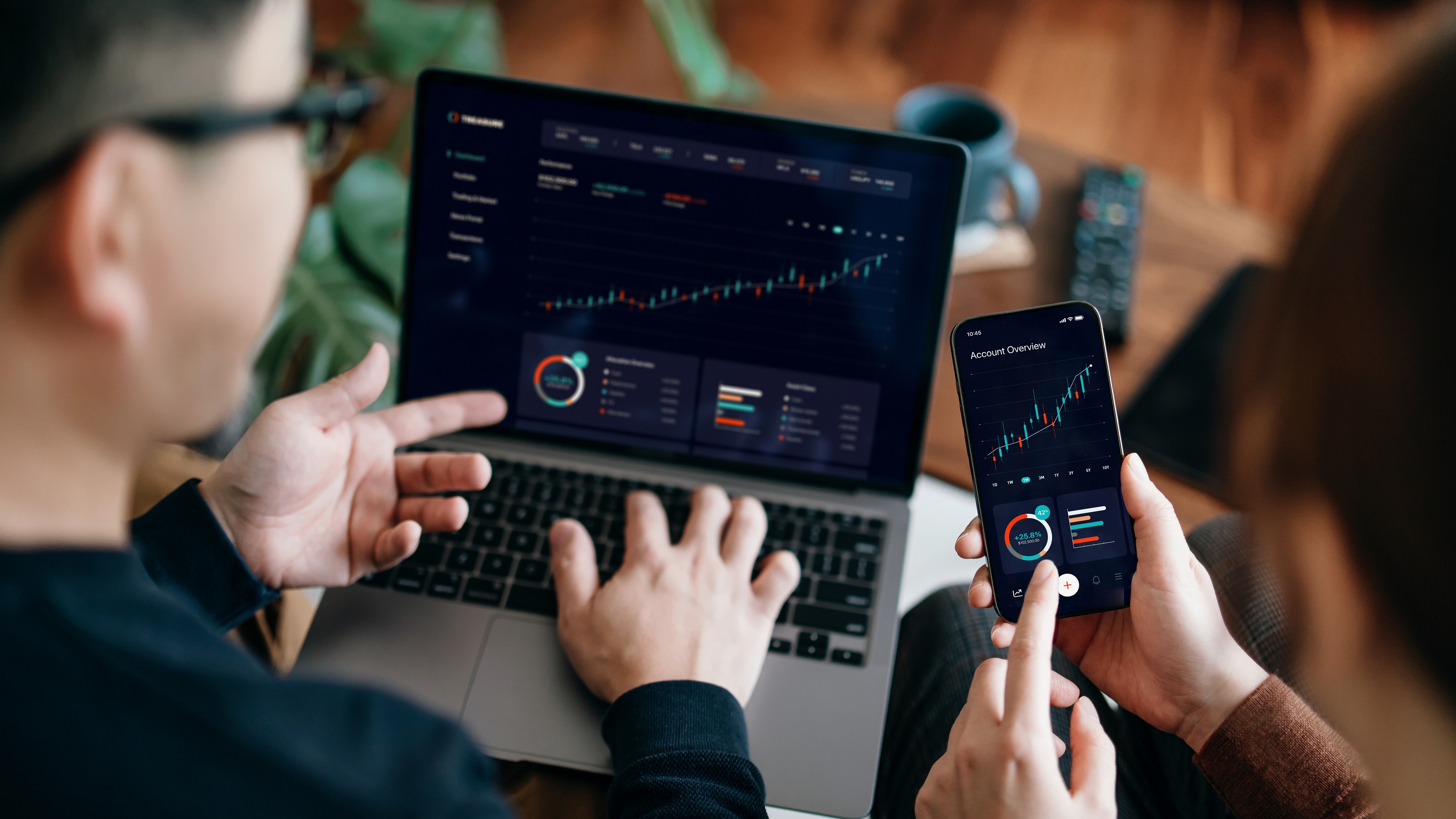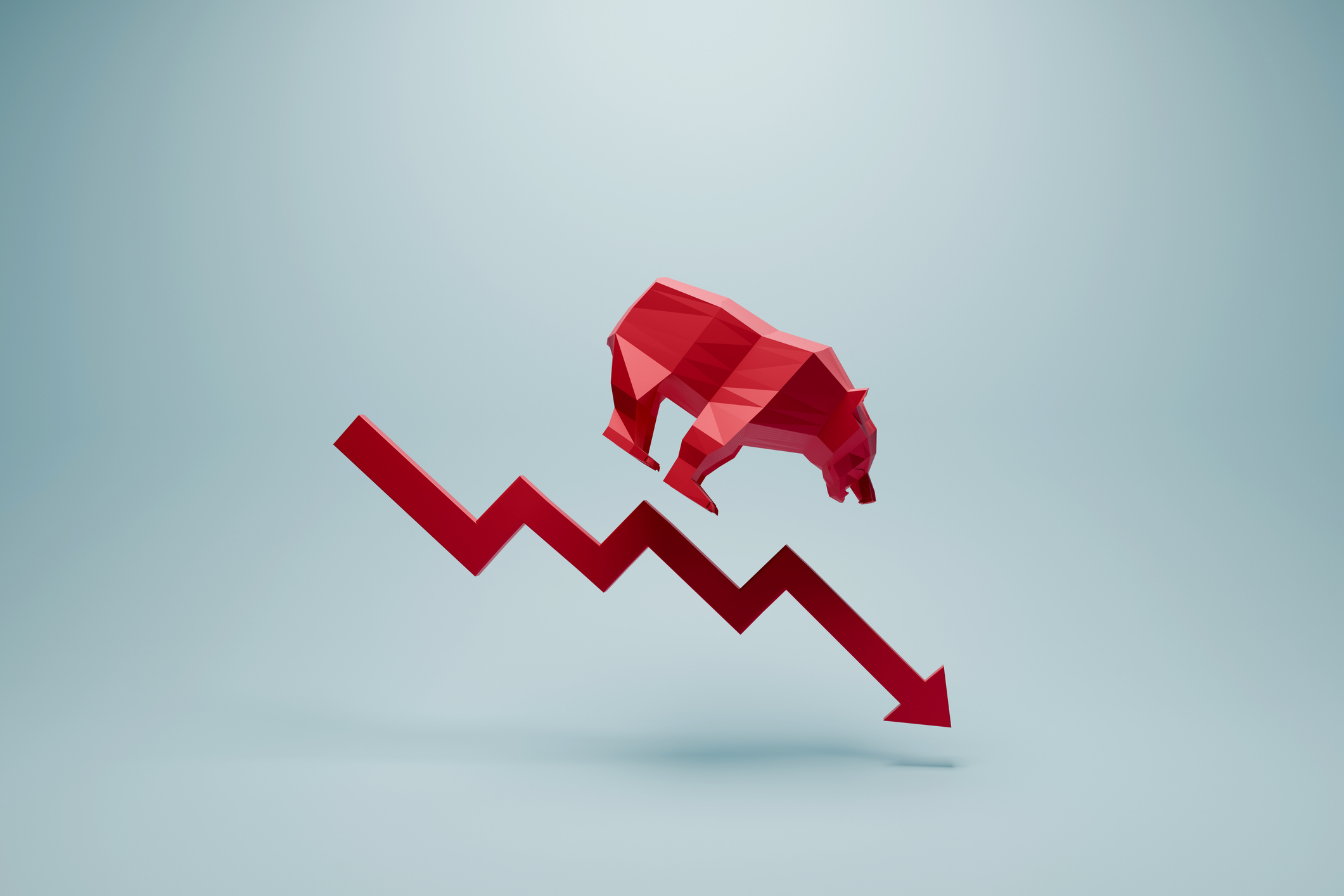For Investors, 2024 Was a Year to Remember
A perfect storm of favorable conditions created a rewarding landscape for investors. A buzz of cautious optimism continues for 2025.


If you’ve ever wondered whether investing is worth the hype, 2024 delivered a resounding "yes" to that question. The U.S. markets once again showcased their potential, delivering impressive returns for investors.
The market winning streak in 2024 was fueled by solid economic growth, declining inflation from historically high levels, interest rate cuts by the Federal Reserve and robust corporate earnings. November added yet another big bang to nearly all U.S. stocks as investors drove the market higher after the re-election of President Donald Trump. Trump’s campaign promises, if delivered, could mean cutting corporate taxes as well as the continuation of lower tax policies that were set to sunset under the Tax Cuts and Jobs Act (TCJA) in December 2025.
As more dollars continue to funnel to the consumer, strong economic growth is expected to continue if inflation stays at bay. Trump is also expected to lighten regulation on several key industries, including financial services, adding additional optimism for strong corporate profits in 2025 and beyond.

Sign up for Kiplinger’s Free E-Newsletters
Profit and prosper with the best of expert advice on investing, taxes, retirement, personal finance and more - straight to your e-mail.
Profit and prosper with the best of expert advice - straight to your e-mail.
Adding fuel to the fire, the artificial intelligence (AI) boom ignited a second consecutive year of outsized gains for Big Tech stocks, which not only soared to new heights but also propelled the broader market upward. This perfect storm of favorable conditions created a rewarding landscape for smart investors who had their money working for them in the market.
Let’s break it down, highlight some big wins and see how your money could have grown.
A stellar year for U.S. stocks
The S&P 500, a collection of 500 of the largest companies in the U.S., is often used as a snapshot of how the stock market and economy are performing. In 2024, the S&P 500 climbed an impressive 23%, building on a strong 24% gain from the year before. Together, these two years delivered a remarkable compound 53% total growth, the best two-year performance since the late 1990s.
If you had invested $10,000 in the S&P 500 two years ago, your investment would now be worth about $15,300. This shows the power of consistent investing in a diverse group of successful companies over time!
Tech dominates again
Technology stole the spotlight in 2024, with the Nasdaq Composite Index — home to many of the world’s biggest tech companies — soaring more than 28%. If you’d put $10,000 into the Nasdaq at the start of the year, it would now be worth $12,800. And that’s on top of an incredible 84% jump from 2022-2024! Over two years, your $10,000 investment would have grown to an impressive $18,400.
Driving much of this growth were the Magnificent 7 tech giants: Apple (AAPL), Alphabet (GOOGL), Microsoft (MSFT), Amazon.com (AMZN), Meta Platforms (META), Tesla (TSLA) and Nvidia (NVDA). These companies lead the charge in areas like AI, electric vehicles, cloud computing and digital innovation.
Midsize and small stocks show strength
The Russell 2000, a key benchmark for small-cap stocks, posted an 11.5% total return. In comparison, mid-cap stocks in the Russell MidCap index gained 15.3%, performing marginally better.
Despite recent challenges, small-cap stocks are poised for growth in the long term and are an important part of any diversified portfolio.
Foreign markets: A mixed bag
International markets struggled to keep up with the U.S. in 2024, delivering lackluster returns. Emerging markets posted a relatively modest 5% gain, while developed markets barely moved the needle with a 1% increase.
This underperformance can largely be attributed to a mix of economic headwinds. Emerging markets faced challenges such as slower-than-expected economic recoveries, geopolitical tensions and a strong U.S. dollar, which made it more expensive for these nations to service dollar-denominated debt. Developed markets, on the other hand, wrestled with sluggish growth and lingering inflation concerns.
While international stocks underwhelmed in 2024, they could present opportunities ahead as valuations remain relatively attractive and economies stabilize. Investors looking to diversify their portfolios may want to keep a close eye on these markets for potential long-term growth.
Bonds and yields: A complicated picture
The bond market painted a more complex picture in 2024. Yields on 30-year government bonds rose to 4.86%, while shorter-term bonds, such as the two-year Treasury, closed out the year yielding 4.3% — it spent much of the year "inverted.” An “inverted yield curve" is very unusual and refers to situations where short-term interest rates are like or even higher than long-term interest rates.
Normally, investors expect to earn more when holding longer-term bonds because of the added risk and uncertainty over time.
Despite the minimal-yield premium, investing in longer-term bonds still may make sense for those concerned about lower interest rates in the future.
What drives the market?
Markets move based on how companies perform and how investors feel about the economy. Recently, stocks have risen due to excitement about AI, lower inflation and the possibility of the Federal Reserve cutting interest rates.
Looking ahead
There’s a buzz of cautious optimism in 2025. Analysts predict the S&P 500 could see an impressive 8.2% gain — but let’s not forget that markets can be full of surprises. The smartest move? Stick with your long-term plan.
History proves that patience pays. Investing in the S&P 500 over the past decade has yielded substantial returns. If you had invested $10,000 at the beginning of 2014 and reinvested all dividends, your investment would have grown to about $40,170 by the end of 2024. This represents a cumulative return of about 301.7%, or an average annual return of 13.3%.
This impressive growth underscores the value of consistent, long-term investing. By staying the course and allowing your investments to compound over time, you can grow your portfolio exponentially.
Your next steps
For those parking cash on the sidelines or first-time investors shy about putting money to work, this is your moment. Imagine the possibilities: starting small, investing regularly and letting your money grow with the market. Even in uncertain times, the U.S. markets have proven resilient, offering substantial rewards to those who stay invested.
One of the best ways to deploy your money in the market is through dollar-cost averaging (DCA). DCA is a simple and smart investing strategy where you invest a set amount of money each month, regardless of whether the market is up or down. Instead of trying to time the market, which is impossible to do consistently, DCA spreads your investments over time, allowing you to buy more shares when prices are low and fewer when prices are high.
This smart investment framework helps smooth out market volatility and reduces the risk of putting all your money into investments at the wrong time. Over time, your portfolio will grow steadily without you having to guess when to invest.
The strategy of dollar-cost averaging is perfect for building wealth with confidence. Why wait? Begin your investment journey today, and let next year be the one where you start building your financial future.
Related Content
Get Kiplinger Today newsletter — free
Profit and prosper with the best of Kiplinger's advice on investing, taxes, retirement, personal finance and much more. Delivered daily. Enter your email in the box and click Sign Me Up.

Stacy is a nationally recognized financial expert and the President and CEO of Francis Financial Inc., which she founded over 20 years ago. She is a Certified Financial Planner® (CFP®), Certified Divorce Financial Analyst® (CDFA®), as well as a Certified Estate and Trust Specialist (CES™), who provides advice to women going through transitions, such as divorce, widowhood and sudden wealth. She is also the founder of Savvy Ladies™, a nonprofit that has provided free personal finance education and resources to over 25,000 women.
-
 6 Stunning Waterfront Homes for Sale Around the US
6 Stunning Waterfront Homes for Sale Around the USFrom private peninsulas to lakes, bayous and beyond, Kiplinger's "Listed" series brings you another selection of dream homes for sale on the waterfront.
By Charlotte Gorbold Published
-
 Six Reasons to Disinherit Someone and How to Do It
Six Reasons to Disinherit Someone and How to Do ItWhether you're navigating a second marriage, dealing with an estranged relative or leaving your assets to charity, there are reasons to disinherit someone. Here's how.
By Donna LeValley Published
-
 Should You Still Wait Until 70 to Claim Social Security?
Should You Still Wait Until 70 to Claim Social Security?Delaying Social Security until age 70 will increase your benefits. But with shortages ahead, and talk of cuts, is there a case for claiming sooner?
By Evan T. Beach, CFP®, AWMA® Published
-
 Retirement Planning for Couples: How to Plan to Be So Happy Together
Retirement Planning for Couples: How to Plan to Be So Happy TogetherPlanning for retirement as a couple is a team sport that takes open communication, thoughtful planning and a solid financial strategy.
By Andrew Rosen, CFP®, CEP Published
-
 Market Turmoil: What History Tells Us About Current Volatility
Market Turmoil: What History Tells Us About Current VolatilityThis up-and-down uncertainty is nerve-racking, but a look back at previous downturns shows that the markets are resilient. Here's how to ride out the turmoil.
By Michael Aloi, CFP® Published
-
 Stock Market Today: Stocks Surge to Close a Volatile Week
Stock Market Today: Stocks Surge to Close a Volatile WeekIt was another day with a week's worth of both news and price action, but it ended on a strongly positive note.
By David Dittman Published
-
 Home Insurance: How to Cut Costs Without Losing Coverage
Home Insurance: How to Cut Costs Without Losing CoverageNatural disasters are causing home insurance premiums to soar, but don't risk dropping your coverage completely when there are ways to keep costs down.
By Jared Elson, Investment Adviser Published
-
 Markets Roller Coaster: Resist the Urge to Make Big Changes
Markets Roller Coaster: Resist the Urge to Make Big ChangesYou could do more harm than good if you react emotionally to volatility. Instead, consider tax-loss harvesting, Roth conversions and how to plan for next time.
By Frank J. Legan Published
-
 Why Homeowners Insurance Has Gotten So Very Expensive
Why Homeowners Insurance Has Gotten So Very ExpensiveThe home insurance industry is seeing more frequent and bigger claims because of weather, wildfires and other natural disasters.
By Karl Susman, CPCU, LUTCF, CIC, CSFP, CFS, CPIA, AAI-M, PLCS Published
-
 Stock Market Today: Uncertainty Proliferates: Dow Loses 1,014 Points
Stock Market Today: Uncertainty Proliferates: Dow Loses 1,014 PointsWeaker-than-expected consumer inflation data wasn't enough to stabilize sentiment during another volatile day for financial markets.
By David Dittman Published